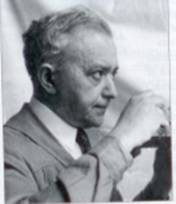
PREV ARTICLE
NEXT ARTICLE
FULL ISSUE
PREV FULL ISSUE
HOW TO DO NUMISMATIC RESEARCH
Dick Johnson submitted these thoughts on how to do numismatic research. Thanks! -Editor
What's it take to be a numismatic researcher? Time. Money. Drive. Resolve. In time you will have to add Experience and Knowledge. This was brought to mind this week in Harry Waterson's report to the board of the Central States Numismatic Society which had awarded him a $3.333.33 research grant last year. A condensed version of his 14-page report appeared in the Winter 2015-2016 issue the Society's publication, The Centinel.
This should be the goal of every specialized collector! Medals are ideal for this numismatic research as far too little is known about this area of numismatics. Researchers and writers can make the greatest contribution to the numismatic field by the pursuit to learn the background and lore of every medal of prominence in their collection. Every medal has a story to tell! Harry took his burning collector's desire to an elevated numismatic level. He would write a book on Kilenyi through the story of his medallic creations. To accomplish this he began gathering details of Kilenyi's life and works. From this he identified where he must dig for more information: museums which held Kilenyi's medals, companies which produced them, institutions which had awarded medals Kilenyi created, libraries with possible archives on the artist or his medallic subjects, family records. With extensive emails and phone calls to curators, librarians, archivists and organizations' media departments, he compiled a list of where he must visit to carry out his research. Hitting the books was also fruitful; he made liberal use of interlibrary loan. With his CSNS grant in hand he could plan a trip to visit each of these in one massive circuit. His itinerary took shape with stops in 60 locations in 25 different cities. This was to take place over 33 days, driving 4,050 miles. An astonishing accomplishment, this was indeed the “Great Road Trip” as Gerry Tebben called it. A researcher must go to where the information is located. Librarians, curators and archivists can help. – Their duty is to serve researchers and the public. -- but they cannot do the searching for you. They can guide you to their resources and make suggestions, but researchers must expect to search documents, correspondence, photographs, microfilm, whatever is contained in those holdings. The “Drive” mentioned above can be interpreted in two ways. Expect to drive a lot, traveling to locations. It also means Determination, stamina for sometimes long hours looking, searching, seeking and the will to do it. Harry did this, resulting in finding a series of portrait plaques for Baseball Hall of Fame, three new medals he had not known previously, others he had never seen before, new medal varieties, observing medals for two U.S. presidents and lots and lots of facts. While Harry Waterson's research trip was exceptional for the length of time and the number of locations, it exemplifies the extent a researcher must go to gather information. Time. Money. Drive. Resolve. It requires all four. As might be expected this must be worked into your life schedule. If you are retired this is ideal. If you are an educator with three months free time in a school schedule, this is ideal. If you can do this during your vacation time, this is ideal. However, you must consider all four requirements to satisfy that burning desire within you to learn more about those objects in your collection. I want to encourage all serious collectors to do numismatic research. I will help where I can. I cannot tell who collects a special topic, but I often know who is researching a series. Perhaps you could join forces if you chose the same topic, or you can pick a new subject. With experience like he has I am sure Harry could make useful suggestions as well. Wayne Homren, Editor The Numismatic Bibliomania Society is a non-profit organization promoting numismatic literature. See our web site at coinbooks.org. To submit items for publication in The E-Sylum, write to the Editor at this address: whomren@gmail.com To subscribe go to: https://my.binhost.com/lists/listinfo/esylum All Rights Reserved. NBS Home Page Contact the NBS webmaster 
|
